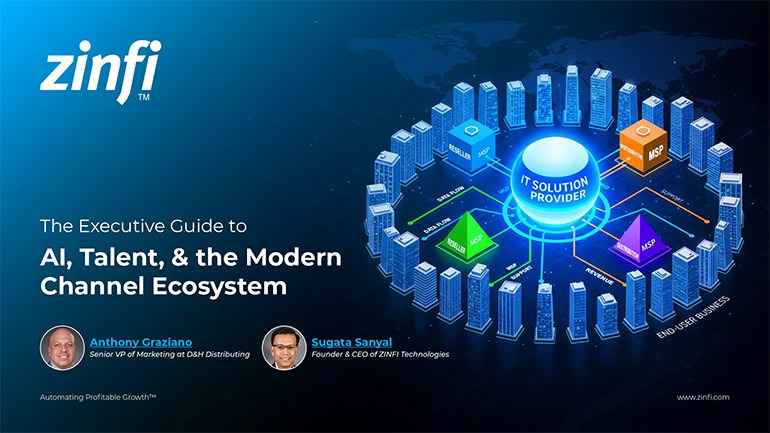Glossary - How to - PRM Solutions
How to Choose the Right PRM Solutions?
Introduction
Defining PRM Solutions and Their Relevance
Partner Relationship Management (PRM) solutions are specialized software platforms designed to streamline the collaboration between organizations and their channel partners, such as resellers, distributors, affiliates, and consultants. These platforms provide a centralized hub for managing partner onboarding, training, deal registration, performance tracking, and communication. In today’s competitive business environment, companies heavily rely on third-party partners to scale operations, enter new markets, and drive revenue growth. Hence, deploying the right PRM solution is critical for optimizing partner engagement, boosting productivity, and achieving business goals.
The Role of PRM Solutions in Partner Management Automation
PRM solutions are fundamental to partner management automation. They eliminate manual tasks, increase operational efficiency, and enhance partner satisfaction through self-service portals, automated workflows, and real-time reporting. In a Partner Relationship Management (PRM) strategy, automation reduces administrative burdens and provides better visibility into the partner ecosystem. It enables organizations to nurture stronger relationships, measure partner performance objectively, and quickly adapt to changing market conditions. Selecting a robust PRM solution ensures maximizing partner contributions and strengthening their overall channel strategy.
Key Takeaways:
Understand Your Business and Channel Needs:
Before selecting a PRM solution, organizations must analyze their channel strategy, partner types, and specific needs. Identify critical functionalities like onboarding, certification tracking, lead management, and incentive programs that must be automated.
Prioritize User Experience (UX) for Partners:
A PRM platform should be intuitive and easy to navigate for partners. A poor user experience can deter partner engagement and reduce adoption rates. Focus on features like customizable dashboards, mobile access, and simplified workflows.
Ensure Seamless Integration with CRM and Marketing Tools:
Modern PRM solutions should integrate with existing CRM (like Salesforce, HubSpot) and marketing automation tools to provide a holistic view of customer and partner interactions.
Evaluate Scalability and Customization Options:
As your partner ecosystem grows, your PRM system should scale accordingly. Look for solutions offering modular features that allow you to customize workflows, branding, and partner segmentation.
Focus on Analytics and Reporting:
Robust reporting capabilities help track KPIs like partner engagement, deal registrations, and program ROI. Select a solution offering detailed, customizable reporting dashboards.
Summary of Key Takeaways:
Choosing the right PRM solution involves understanding internal requirements, ensuring partner-centric design, focusing on integration capabilities, planning for scalability, and leveraging analytics for continuous improvement.
Key Examples:
- Automotive Manufacturing: In automotive manufacturing, PRM solutions streamline dealer onboarding, training certifications, incentive management, and warranty claim processes, leading to more productive dealership networks.
- Consumer Electronics: Consumer electronics brands use PRM platforms to manage global distributors, enable faster product launches, and ensure brand consistency across marketing campaigns.
- Energy Production: PRM solutions in the energy sector help manage partnerships with installers and service providers by offering training certifications, deal registrations, and co-branded marketing support.
- Financial Services: Financial firms use PRM systems to manage relationships with brokers, agents, and third-party vendors, ensuring compliance, performance tracking, and lead management automation.
- Food and Beverage: Food manufacturers use PRM tools to engage with regional distributors, track promotional activities, and maintain brand integrity in diverse markets.
- Healthcare Services: Healthcare organizations utilize PRM solutions to manage partnerships with clinics, hospitals, and insurance providers while ensuring compliance with health regulations.
- Information Technology: Tech companies rely on PRM platforms to manage VARs (Value-Added Resellers), MSPs (Managed Service Providers), and consultants through comprehensive partner portals and automated workflows.
- Pharmaceutical Development: Pharma companies manage partnerships with research organizations, distributors, and medical representatives using PRM tools that automate compliance training and sales tracking.
- Retail Industry: Retail brands implement PRM platforms to enhance franchisee relations, streamline product launches, and create incentive programs that drive store-level sales.
- Telecommunications: Telecom providers use PRM platforms to manage relationships with resellers, agents, and installation partners, automating order management and marketing support processes.
Conclusion:
Choosing the right PRM solution is critical for organizations aiming to build a thriving partner ecosystem. In the introduction, we discussed how PRM solutions help companies manage partner relationships efficiently and the importance of automation in PRM. Through the key takeaways, we learned that understanding business needs, focusing on user experience, ensuring integration, planning for scalability, and leveraging reporting tools are vital steps in selecting the right solution.
Industry examples illustrated how PRM platforms drive success across sectors—from automotive manufacturing to telecommunications. No matter the vertical, the core principles remain the same: PRM solutions should empower partners, simplify management processes, and deliver measurable business outcomes.
Ultimately, organizations investing in the right PRM solution position themselves to drive sustainable channel growth, boost partner satisfaction, and stay competitive in today’s dynamic market.
Associated Keywords:
- Partner Relationship Management Solutions
- Best PRM Software
- PRM Platform Selection Guide














